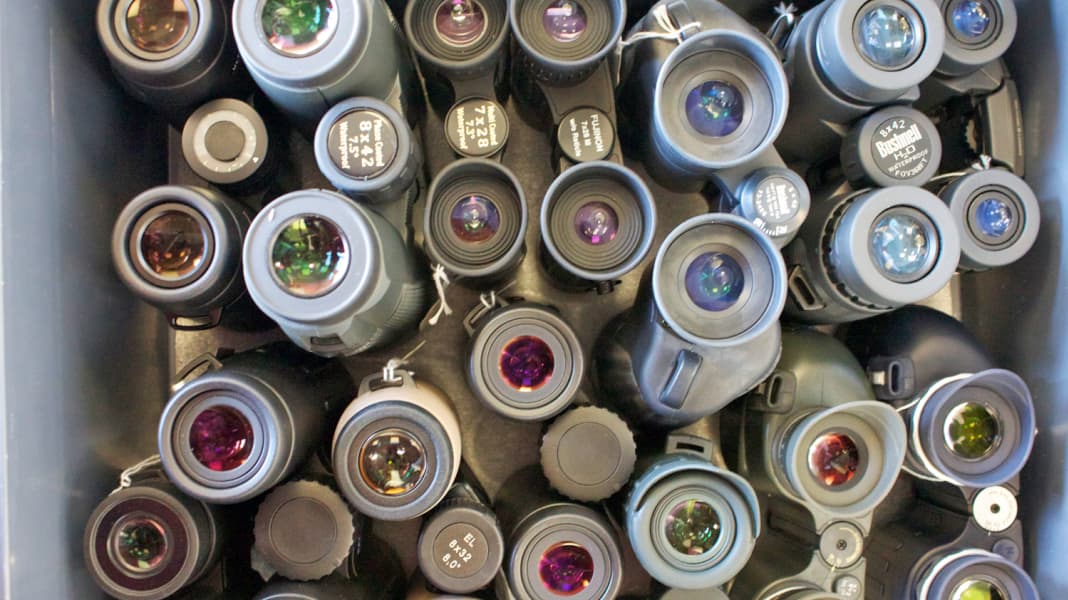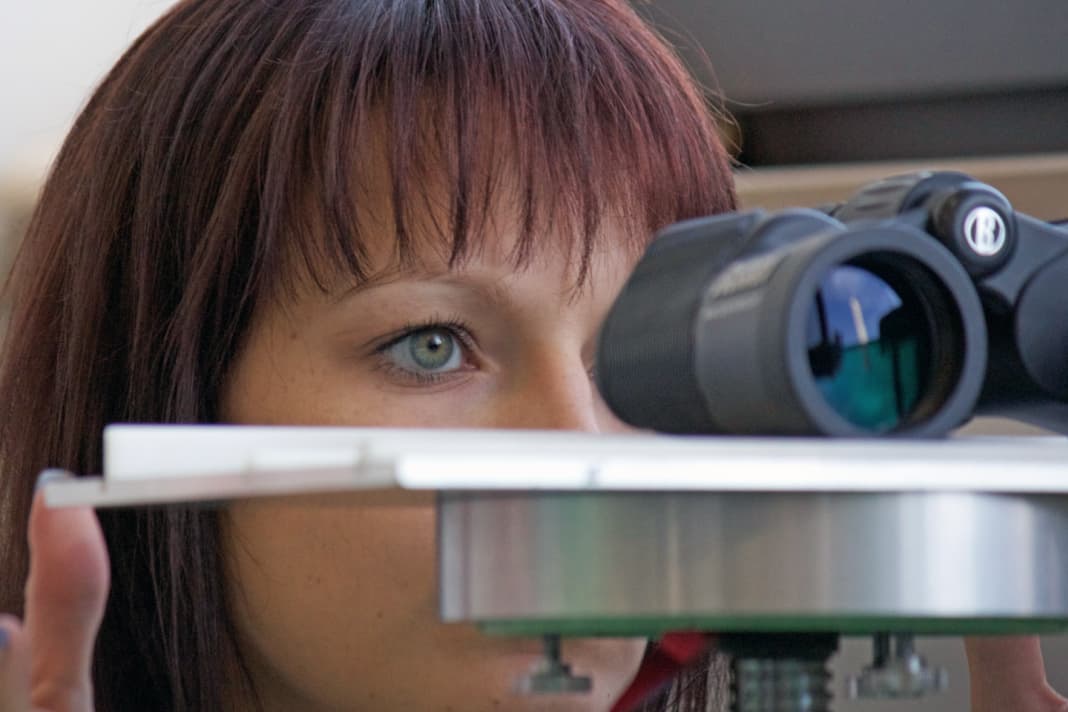
You can't go boating without binoculars! There's simply too much to see on the water besides the navigational homework. Boats, buoys and bikinis are undoubtedly among the most popular objects of observation.






In the past, experienced skippers used the classic water sports binoculars with 7x magnification and 50 mm objective lens diameter, or 7 x 50 for short, as an optical aid. Optics with these parameters have proven themselves on board for decades.
The reasons for this are obvious: with the 7x magnification, you can comfortably keep an eye on the "target" even when the base is swaying, and the "thick" 50 mm lenses still guarantee sufficient light incidence even in unfavourable weather conditions.
The disadvantage of these maritime optics is that they are often heavy, unwieldy and decidedly too large for smaller boats. It stands to reason that items with these characteristics don't often make it into the boat luggage for the weekend.
One company that has also recognised this dilemma is Steiner Optik. For this reason, the Bayreuth-based company developed the much smaller Commander 7 x 30, a handy pair of binoculars suitable for small boats, which is hardly inferior to its larger 7 x 50 brothers in terms of optical performance. Thanks to its blue rubber armouring, yellow floating straps and the teak case supplied, the mini Commander cannot deny its maritime origins.
Other well-known manufacturers also offer small compact binoculars. These often do not look as "seaworthy" as the Commander series from Franconia and sometimes deviate slightly from the 7 x 30 dimensions. Nevertheless, why shouldn't binoculars that are actually intended for birdwatchers, hikers or hunters also do their job on board a pleasure craft? A question that we investigated in the laboratory and on the water.
Anyone looking for a new pair of binoculars in a specialist shop or online will be overwhelmed by the range on offer. From palm-sized 3x15 opera glasses to massive 20x80 observation binoculars for border guards and snipers, everything is available. Fortunately, the group shrinks if you are specifically looking for optics with 7x magnification and 30 mm objective lens diameter.
Since, as already mentioned, not all manufacturers produce exactly these models, we expanded the test selection to 8 x 30 and 7 x 42 binoculars. All in all, we ended up with 15 binoculars, including more affordable binoculars (up to 300 euros) from Bushnell, for example, and top-of-the-range binoculars from Zeiss, Swarovski and Leica, which easily surpass the 1600 euro mark. The brands Steiner, Fujinon and Nikon, whose test products are each available for less than 1000 euros, are in the middle of the price range.
If you look through binoculars of different price categories on a bright sunny day, you will hardly be able to tell the difference between the inexpensive and the expensive binoculars - provided that the optics are mounted mechanically correctly and the binocular halves are accurately aligned parallel to each other. In this case, it is difficult to recognise any significant defects with the naked eye. In practice, these only become apparent in fading light or on the optical test bench in the laboratory.
As binocular observations outdoors can only be of a purely subjective nature and also depend heavily on the visual performance of the observer, we have only used the reproducible laboratory results to assess the individual binoculars. These include the following measurement points:
- Resolution
- Collimation
- Magnification
- Field of view (1000 m)
- Lens diameter
- Transmission
We also subjected all the glasses to cold and heat tests. This was followed by a vibration test in which the binoculars were briefly subjected to 11 times the acceleration due to gravity (11G). Later, the binocular halves were checked again for correct (parallel) assembly.
